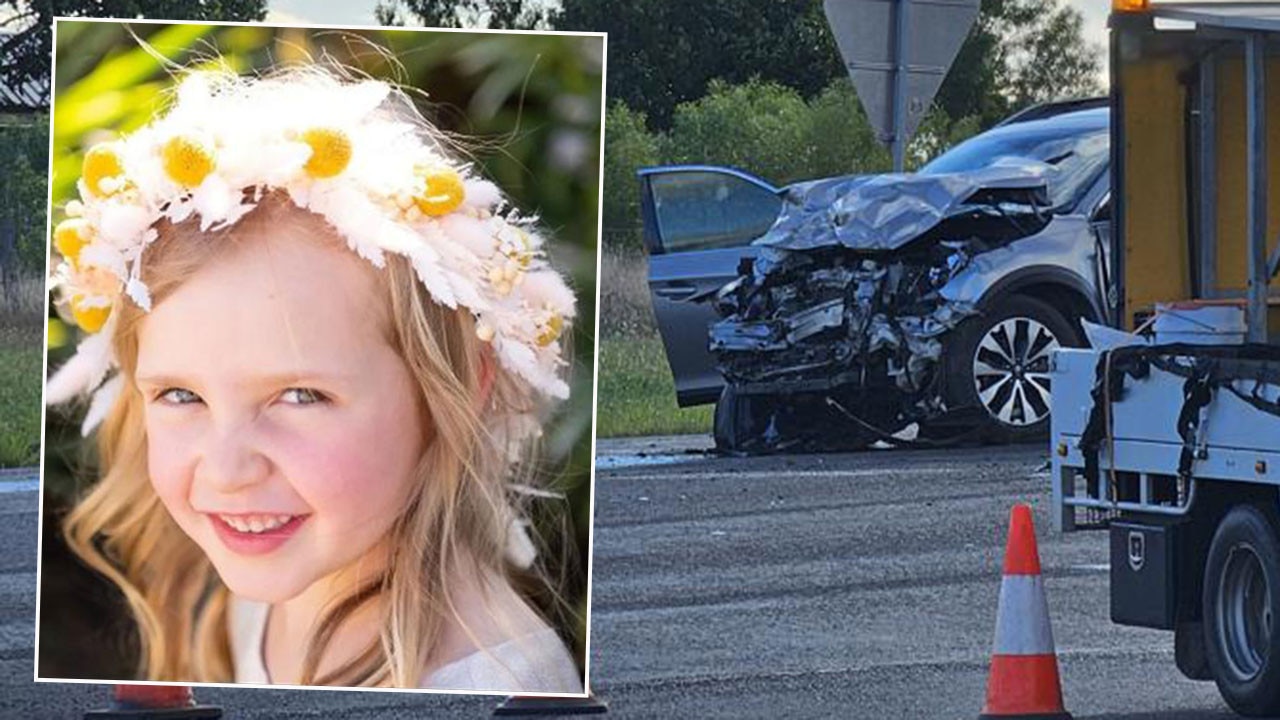Obituaries for December 26, 2020: Musician Royce Wells and surfing adventurer Ken ‘Kiwi’ White
The eclectic life of Royce Wells reached its end this month – we pay tribute to the musician, historian and Eastwood “House of Psychedelia” owner.
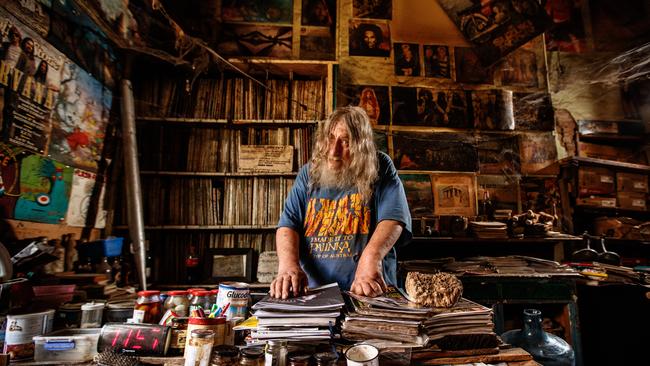
Opinion
Don't miss out on the headlines from Opinion. Followed categories will be added to My News.
ROYCE LLEWELLYN WELLS
Musician and historian
Born: May 8, 1942, Eastwood
Died: December 9, 2020, Glen Osmond
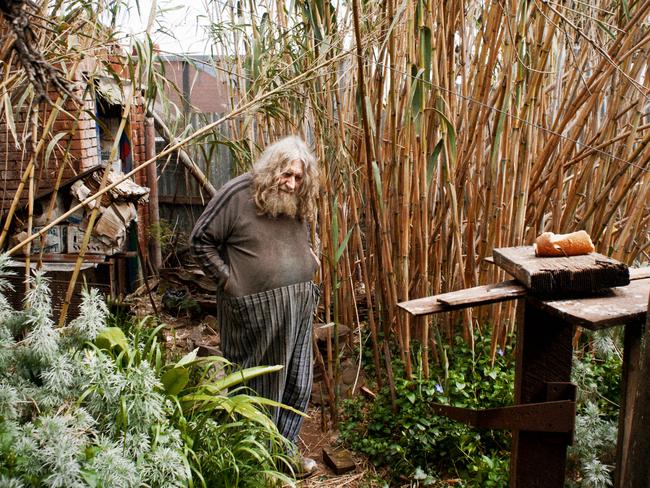
Royce Wells was an eccentric character who lived for 78 years – his entire life – in the distinctive House of Psychedelia at Eastwood.
The colourful fence paintings and signage at the property have been a well-known fixture on Fullarton Road from the 1970s, when some art-college friends began painting it.
And when Royce was threatened with eviction in 2018, after the State Government’s Housing Safety Authority deemed the property “unsafe or unsuitable for human habitation”, his friends rallied to help save it from demolition.
Born during World War II, Royce was the only child of Stanley and Iona Wells. His parents were already living in the home when he was born – it was given to Royce’s grandparents, Les and Clara Culley, as a wedding present in 1915.
Before his grandparents moved into the home, the captain of a Glen Osmond silver-and-lead mine had lived there. This connection helped spark in Royce a lifelong interest in the many abandoned mines dotted across South Australia.
He went to Unley High School and also worked at the former Williams Beverages making drinks such as cordial and cider. It was there that he met friend Ian Cullen and together they would explore old mine shafts.
Royce developed an encyclopaedic knowledge of SA mines. When the Williams factory closed in the 1980s he was employed by the Mines Department as a field assistant and historian. He helped map all the old mine shafts.
Royce worked there for about seven years before the job ended. This became a sore point for Royce, who felt he was never given the credit he deserved for using his unparalleled knowledge to map abandoned mines in the state.
His other great love in life was music, which began as a small child. Growing up in a religious family, he learnt to play the piano and organ and would practise before school every day for about half an hour.
He went on to become an organist, choirmaster and composer. He led choirs at churches in Eastwood, Parkside, Mitcham and Westbourne Park. Then, in the 1960s and ’70s, friends introduced Royce to the music of the likes of Bob Dylan and he began collecting vinyl records.
In the 1960s, Royce and his friends started a regular music club at his home. They helped him set up turntables and named it the Almanda Music Club after an abandoned silver mine in the Adelaide Hills.
But, in the late 1980s, Royce was injured in a mine incident and his health began to decline. As his physical health began to fall apart, so, too, did his home.
Royce suffered from a range of health issues including arthritis. He became more known for keeping possums and stray cats as his house became more dilapidated. At one stage, he had about 20 cats.
The home was also bursting at the seams with rocks and mining equipment collected from mine shafts across SA, vinyl records, books, posters and a host of other memorabilia such as old black-and-white film footage of mine shafts dating back to the 1960s.
In January 2018, Royce was ordered to bring his home up to a habitable standard or face the possibility of it being demolished.
John Herrmann, the state housing regulator and registrar at the time, said Royce’s case was the “most significant” the authority had ever seen.
The ceiling was missing in parts and safety inspectors found no evidence of a toilet, bathroom, kitchen, laundry or running water.
Old friend Colin Beaton helped fund the building of a cabin out the back of the property for Royce to live in, supported by other friends such as photographer Alex Frayne and former Burnside councillor Di Wilkins.
Royce said at the time: “It’s been in the family for 103 years and it’s very important to me.”
At the funeral, Mr Beaton thanked everyone who helped save his friend’s home.
“The rightness of a cause in some ways depends on who rallies to support it, ” he said.
Royce had hoped the measures would allow him to stay at the House of Psychedelia for the rest of his life. But, after his health declined further in July, he had to move to respite care in Glen Osmond, where he spent his final days.
Some of his friends hope the home can be restored to its former glory and the artefacts can be put on permanent display.
KENNETH “KIWI” RAYMOND WHITE
Surfing adventurer
Born: June 27, 1944, Port Lincoln
Died: June 17, 2020, Port Lincoln
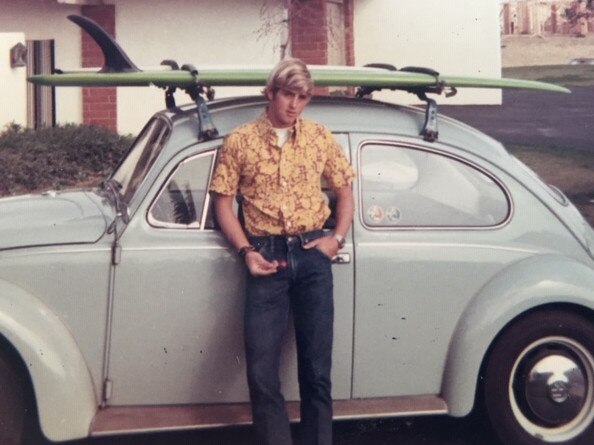
Kiwi White travelled to more than 100 countries working and surfing, but felt most at home holding court around the campfire on South Australia’s West Coast.
When born, he was named Kenneth by father Gordon White, a railways fireman, and mother Joyce. He had two younger sisters, Dorothy and Gloria Jean. When about five, Ken would play cowboys and Indians with the children on his street. As a “railway kid”, he became the leader of the Indians. His mum dressed him up in moccasins, a headband with feathers and “Kiwi” shoe polish on his face. The other children said: “We will call you Kiwi because of your war paint.” The nickname stuck.
When Kiwi was 11 his mother ran away with a Czechoslovakian boarder called Joe. They moved to Kalgoorlie and had five more children. Kiwi did not see her for about 15 years.
He was sent to his Aunty Clarence in Adelaide, where he went to Brighton High. Clarence instilled a sense of neatness in Kiwi which lasted his whole life.
He loved to go to Somerton Beach. He met a hitchhiker from Melbourne on Christmas Day and invited him back to their house for lunch. After learning how to hitchhike that day, Kiwi thumbed it to Moana, where he saw people surfing on rubber mats. He hired one for two shillings.
In 1960 Kiwi started a job in Elder Smith’s mail room and also competed in the Australian Surf Life Saving Championships at Moana. But he got kicked out of the lifesaving club for surfing too much.
Kiwi bought a motorbike with a sidecar to carry his board so he could surf around Victor Harbor. During that time a mate called John Arnold screened the first surf movie in Adelaide.
Kiwi was transferred to Port Lincoln for work in the early 1960s. But, after seeing the movie Endless Summer in 1966, he quit his job to surf a break in South Africa featured in the film. People said he was mad, but he said: “The power of the surf is overwhelming and I just need to go.”
Kiwi travelled to Perth and boarded the Southern Cross to Africa. He left Australia with the equivalent of about $200 and returned five years later with $2000 after visiting 44 countries.
He worked for the fire department in Durban, fighting fires, driving ambulances and delivering about 25 babies. After two years there, Kiwi headed north. He caught a ship to India and met a British family in Delhi. They drove in a Kombi van to London via Afghanistan, Iran, Turkey and a host of Europe countries.
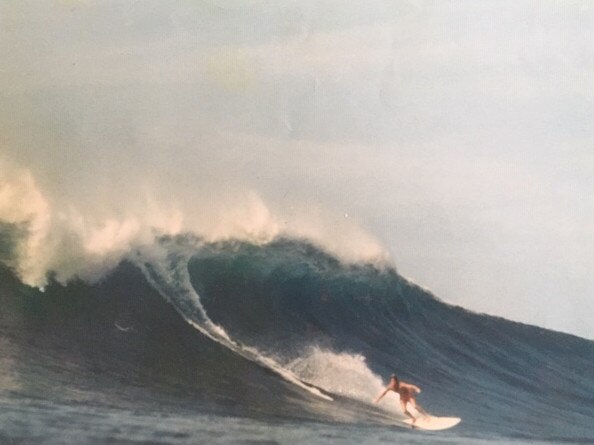
From London he went to Canada. He worked in a can factory in Montreal. After three months he set out for the 1968 world surfing titles in Puerto Rico via New York City and Miami. He rented a house with other surfers in Puerto Rico, mixing with famous names such as Midget Farrelly and Wayne Lynch. From there he moved to California, became one of the first Aussies to surf huge waves in Hawaii, then returned to Australia.
He worked for Midget Farrelly in Sydney before making his way back to Port Lincoln to take up work in the abalone industry, which he did for the next seven years.
Kiwi met Port Lincoln schoolteacher Robyn while motorbike racing in the Riverland. Her car had broken down so her father asked him to give her a lift back to Port Lincoln.
They got married in 1973 and had daughter Sophie. Kiwi worked as a cray and tuna fisherman and, in 1979, secured a job as a tuna spotter. He worked across the world in that industry for 34 years.
Kiwi’s phone rang one day and a voice said: “Hello, my name is Michelle Nolan.
“I am speaking to you from San Francisco, California, and I have reason to believe you are my biological father.”
Kiwi burst into tears. He had met Michelle’s mum Kathy while in Canada. Kiwi visited Michelle many times in California and she would also visit Port Lincoln.
His extroverted nature also helped him gain access to movie sets. In 1975, he worked with Rodney Fox filming footage for Jaws. He also had a speaking part in 1981 movie Gallipoli. Mel Gibson spotted Kiwi working on set and requested he be in the film.
Kiwi was diagnosed with an aggressive form of cancer last year but still managed one more surfing triumph – winning the Australian 75-and-over title at Crescent Head, NSW. When his win was announced “the whole place just went berserk,” Kiwi said.
He is survived by Robyn, Sophie and Michelle.




